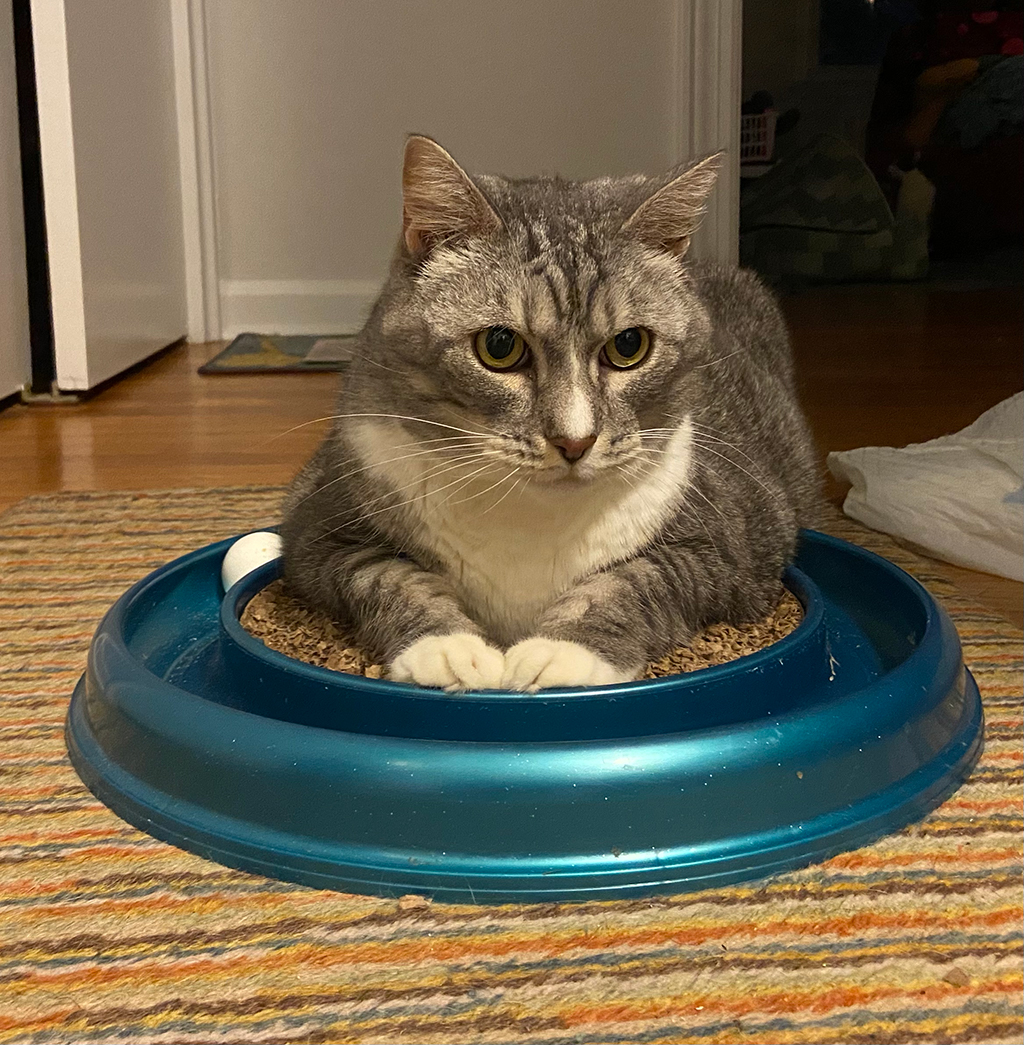Cats like to scratch. They scratch during play, to mark their territory, communicate with us, and stretch their joints and muscles. Scratching is as natural to them as eating and drinking. Some cats are horizontal scratchers, some are vertical scratchers, while others like a merry mix of angles. A cat’s claws need constant maintenance and regular sharpening, so for that reason, they scratch to remove frayed, worn outer claws and expose new, sharper claws. All this scratching activity can cause a lot of damage to furniture, drapes, and carpeting, but most unwanted scratching behavior is easily fixed. Cats can be trained (yes, you read that right) to direct their scratching away from furniture pieces and other valued artifacts.
At Smiling Kitty, we work hard to educate the public on the inhumane practice of declawing cats. Please do NOT declaw your cat to fix unwanted scratching! The term “declaw” is a misnomer. It implies that declawing is simply a fancy pedicure that only involves the removal of a cat’s claws. In reality, declawing is the amputation of the last digital bone, including the nail bed and claw, on the front of each toe. It would correspond to cutting off the nail joint on a human finger. It is unnecessary, inhumane cruelty and is associated with significant pain for the cat, not only in the recovery period.


